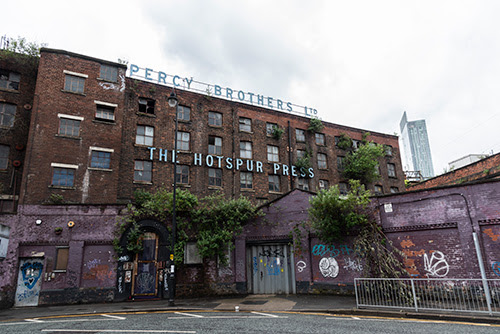Save Britain’s Heritage has submitted a letter to Historic England calling for urgent statutory protection for Medlock Mill, also known as Hotspur Press.
The handsome building represents the early evolution of mill technology in Manchester where the cotton industry drove the city’s growth and development – and in turn powered the UK’s Industrial Revolution.
A recent proposal to demolish and redevelop parts of the mill makes this a critical moment to list this rare and significant survival say the group
The building is set to be converted to become a 595-bedroom student block as part of a 37-storey tower along with commercial units, and a 10,000 sq ft public square.
New evidence from the Greater Manchester Archaeological Advisory Service (GMAAS) has revealed that parts of Medlock Mill, which sits beside the River Medlock in the city centre, date from as early as c.1794, though it was substantially rebuilt in 1801 after a fire.
In their letter of support, the group have emphasised that Medlock Mill is of special historic and architectural interest as it retains evidence of early mill technology in which a waterwheel was connected to a steam-powered pumping engine.
There is also evidence that it was, unusually, operating as an integrated mill with both spinning and weaving. It represents an important stage in the evolution of power generation from the late 18th to 19th century, making it the only surviving mill of this type in Manchester.
Despite some later 19th-century alterations, many original features, like the 1801 five-sided fireproof stair tower on the spinning block’s northwestern facade, remain.
Planning permission has already been granted once – in 2020 – for partial demolition, though this was not implemented. However a similar application for demolition and redevelopment of the site has since been submitted and is currently under consideration
In SAVE’s letter to Historic England, our assistant conservation officer Lydia Franklin wrote: “While SAVE is supportive of finding a sustainable new use for this building, we consider it to be of paramount importance that the building is given statutory listed status to protect its nationally significant special historic and architectural interest, and ensure development is sympathetic to the building’s rarity.”







